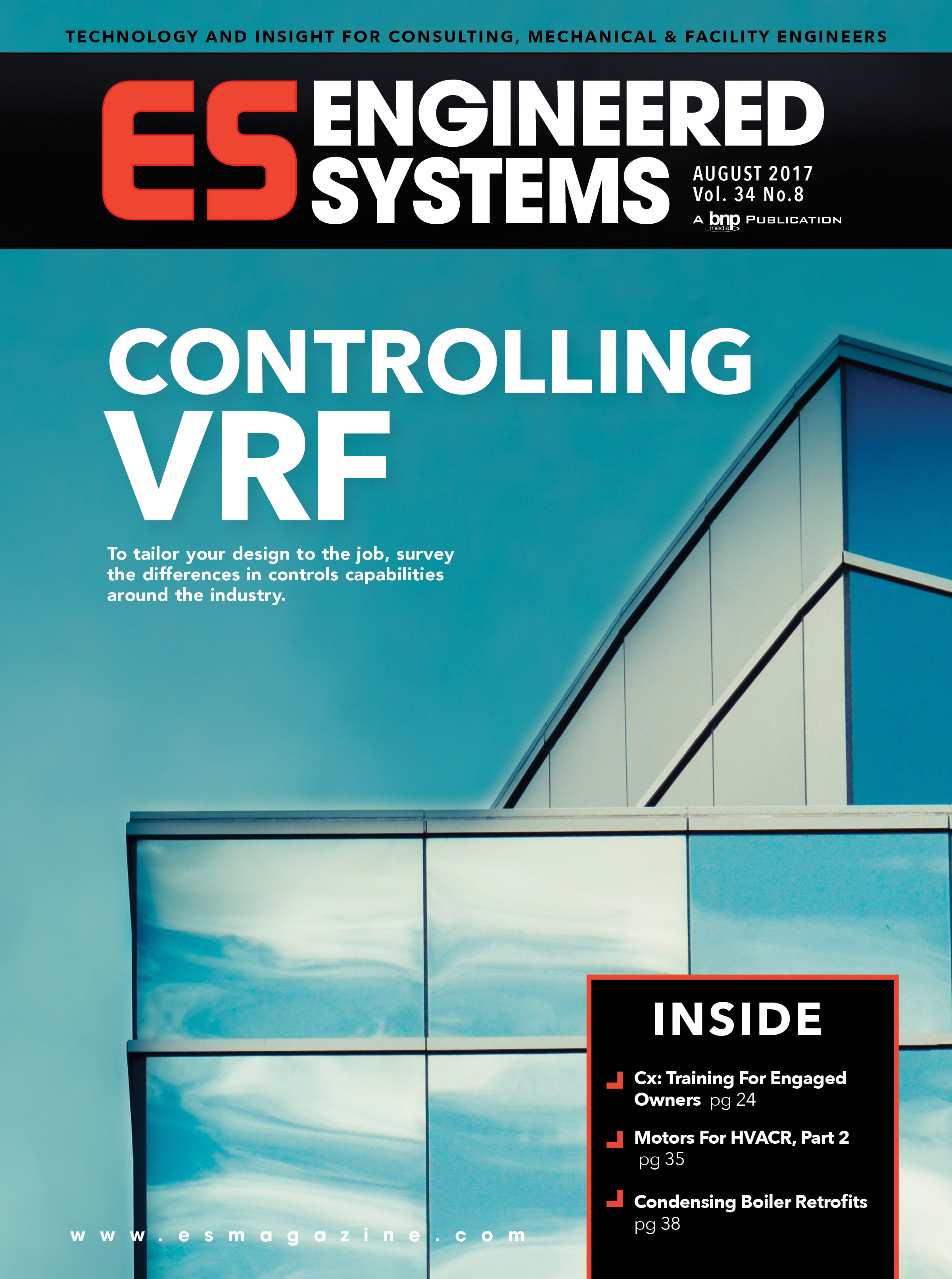CLEARLY PRESENTED PROS AND CONS? YES, PLEASE.
Stop to think a bit about how your product selection process works. If you are a graduate engineer, somewhere deep in your brain you have knowledge of the engineering principles related to heat transfer, thermodynamics, physics, control theories, and other formal educational grey matter. Also, somewhere deep in your mind, you have some knowledge of various products that you have specified on previous projects. This in, essence, is the beginning point of most of system designs and product selection decisions.TAPPING THE DATABASE OF KNOWLEDGE
An engineer works first from an established knowledge base. During each new project there is an opportunity to expand this knowledge base by researching new and different products that may be more applicable to the new project.The relatively new LEED® design process is one such change in the building industry. Whether this is a marketing trend or a real paradigm shift in the way that buildings are designed and built in the United States and worldwide from here on is yet to be determined.
When it comes to selecting products for incorporation into systems, one needs to evaluate these products. Terms like subjective and objective come into play. Subjective means "characteristic of or belonging to reality as perceived rather than as independent of mind" and objective means "condition in the realm of sensible experience independent of individual thought and perceptible by all observers having reality independent of the mind," according to theWebster-Merriam Dictionary.
Do you use subjective or objective evaluation methods when you select products to be specified and installed in your clients' facilities? Are you open-minded (objective) when it comes to considering new ideas, products, and systems on each project, or are you locked in on your subjective evaluation that allows you to make decisions quickly and get the job done?
THE BENEFITS OF THE MATRIX
A matrix developed in a format that allows tabulation of results is a tool that can be helpful in evaluating systems or products. By noting the salient product features across the top of the matrix and the benefits across the left side of the matrix, the form can be used by the design team to agree both objectively and subjectively on the value of these various features and benefits of the basis-of-design product. The benefit of using a product selection matrix form is clear documented information as to why products and features of those products are specified.When the purchasing decision time comes, it is easier to evaluate whether the specified product is in compliance with the specifications, and if not, it is clear as to what is not in compliance. In this manner, any non-compliant feature can be accepted or rejected based on the agreed upon benefit of that feature.
A matrix analysis is not a new tool to the industry; however, it is underutilized. A matrix can be a communication tool compatible with current industry trends attempting to fix and minimize current inefficiencies in the building delivery systems.
Below is a general outline of a typical product selection process that engineers go through. Using this process along with a product selection matrix will help ensure that the engineer can "hold the spec" for the right reasons, with everyone on the project team understanding why. This may help minimize or eliminate the common held belief that all the owner cares about is lowest first cost on bid day when venders and contractors sometimes take liberties to bid outside of the scope of the contract document requirements. This is not a formalized process; however, it is one that happens in an informal manner day in and day out in the building design profession:
- Determine the need for a product based on the client's needs.
- Determine the need for a product based on the system type.
- Determine the capacity of the product (present and future considerations)
- Determine how the product will be controlled.
- Determine what products and manufacturers are available to meet the above needs.
- Select a product to be used for basis-of-design in the contract documents with respect to system layout and specifiable features.
- Schedule and specify the product selected, as well as alternative manufacturers that have suitably equivalent products.
- Evaluate products submitted by the successful contractor for conformance to the contract document design intent.
- Accept or reject submitted product.
- Review installation for conformance with the design intent and the manufacturer's requirements.



